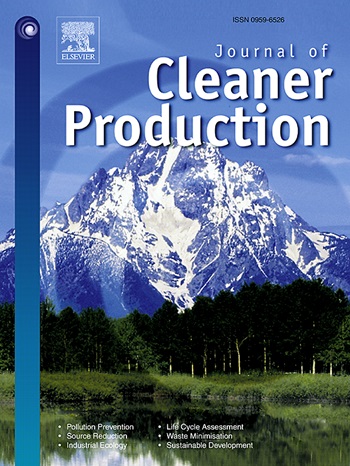Energy Transition in Tissue Paper Industry Through Solid Biomass Combustion and Gasification: techno-economic potential and limitations
IF 9.7
1区 环境科学与生态学
Q1 ENGINEERING, ENVIRONMENTAL
引用次数: 0
Abstract
The pulp and paper industry is a hard-to-abate sector still largely relying on fossil fuels. Tissue paper manufacturing necessitates c.a. 1300 kWhth/tpaper(up to 500°C) and 800 kWhe/tpaper to maintain high productivity performance. Within this framework, this study addresses the use of bioenergy in the tissue paper manufacturing sector, where ready-to-use cellulose is imported and there is no autochthonous biowaste availability like in Kraft-based pulping processes. Assuming the adoption of conventional and reliable systems (biomass boilers, biomass gasifiers and cogeneration systems), this paper examines both the potential environmental benefits and the techno-economical challenges of their implementation in basic layouts and in cogeneration solutions. The results indicate that a fully biomass-based setup, capable of eliminating fossil fuel use through self-generated electricity, can reduce energy-related CO2 emissions by 80%. However, the viability of this solution is constrained by the substantial biomass requirement (c.a. 57 kt/y), necessitating significant storage and handling capacities. Considering biomass-based solutions as a partial alternative appears more viable, due to the balance between construction costs, logistical demand, and natural gas consumption reduction. These solutions achieve CO2 emissions reductions ranging from 12% to 45%, using only 13% to 33% of the biomass required for a full system replacement. The impact of the innovative layouts investigated in this study is projected on the district of Lucca, one among the main tissue paper district at EU level (18% of EU tissue paper output). The replacement of natural gas with bioenergy could achieve -227 ktCO2/y, but this approach would lead to an non sustainable forestry wood biomass consumption (estimated around 93% of the local potential). Moreover, reasonable payback time requires biomass costs to range between 22 and 31 €/MWh which is challenging in Italy but may be viable in Northern European countries where biomass is cheaper and bioenergy exploitation is more common. Therefore, the economic analysis indicates significant feasibility risks in introducing bioenergy to reduce natural gas for use in heating systems. Nonetheless, in the short term, this solution is competitive compared to other decarbonization strategies, including direct electrification.求助全文
约1分钟内获得全文
求助全文
来源期刊

Journal of Cleaner Production
环境科学-工程:环境
CiteScore
20.40
自引率
9.00%
发文量
4720
审稿时长
111 days
期刊介绍:
The Journal of Cleaner Production is an international, transdisciplinary journal that addresses and discusses theoretical and practical Cleaner Production, Environmental, and Sustainability issues. It aims to help societies become more sustainable by focusing on the concept of 'Cleaner Production', which aims at preventing waste production and increasing efficiencies in energy, water, resources, and human capital use. The journal serves as a platform for corporations, governments, education institutions, regions, and societies to engage in discussions and research related to Cleaner Production, environmental, and sustainability practices.
 求助内容:
求助内容: 应助结果提醒方式:
应助结果提醒方式:


